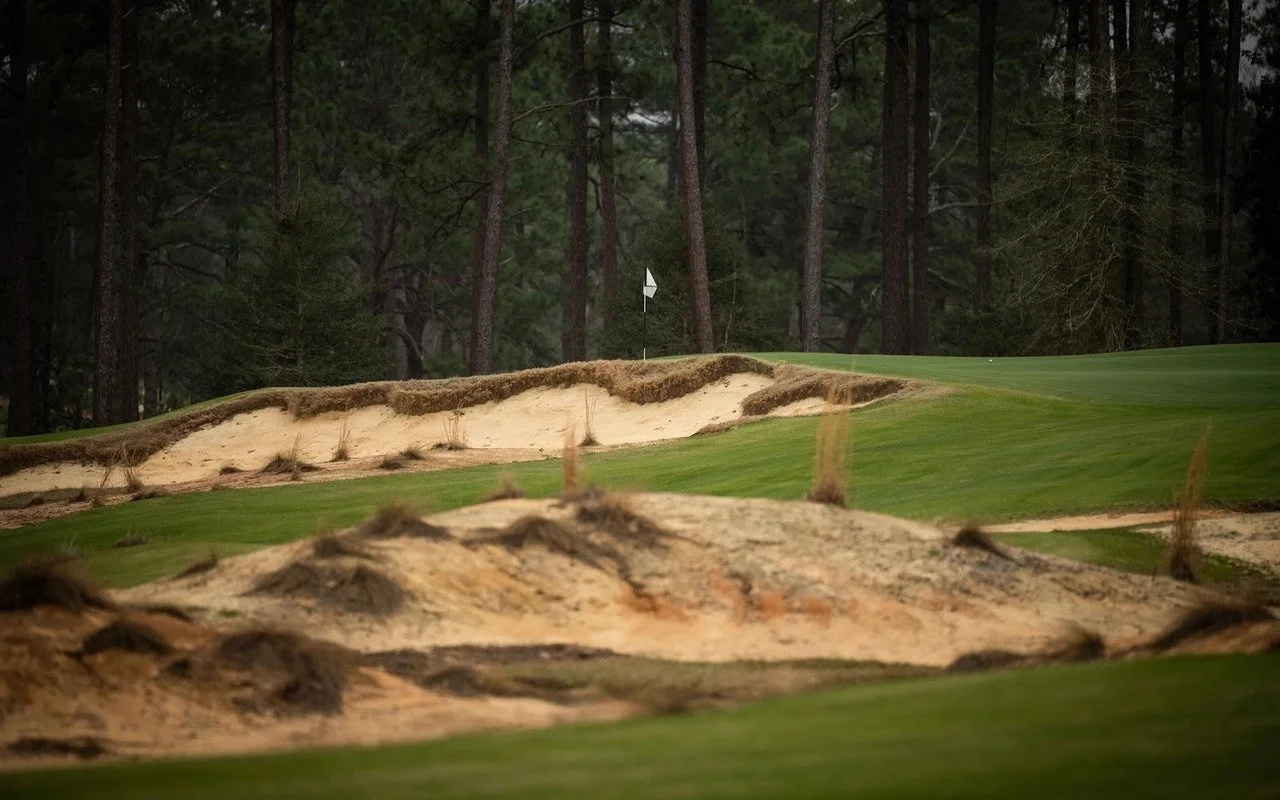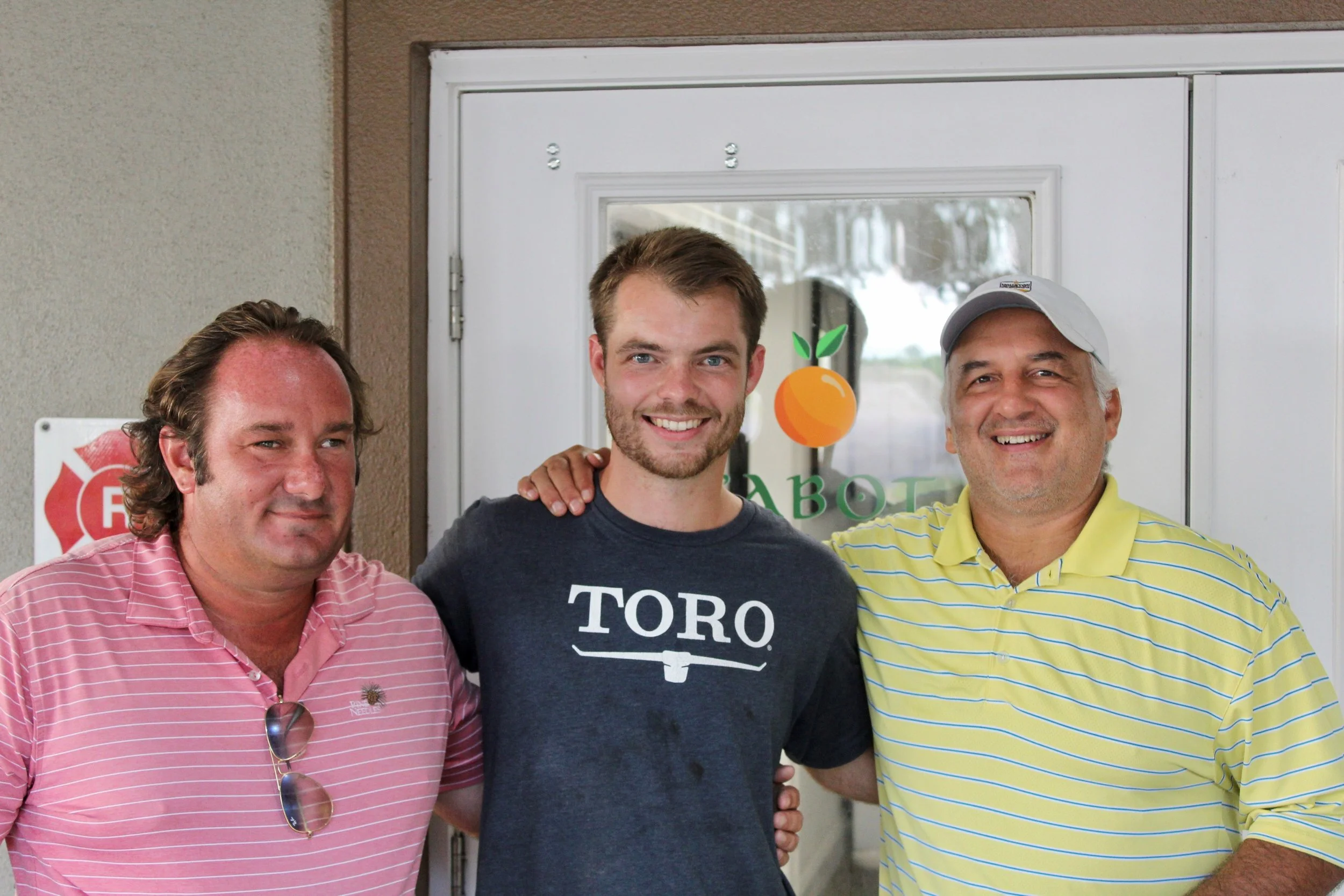Tie Course Reviews: Cabot Citrus Farms - Henry Shimp
My 3 Core Takeaways:
Cabot Citrus falls in the “maximal minimalism” school of architecture. Leave the land as it is at a high level, but send it on the shaping of bunkers and greens/surrounds.
2. The optionality provided by alternate fairways and large, varied greens is highly additive in a place like Florida where you get a lot of wind and variability in day-to-day conditions.
3. Cabot Citrus offers a lot more than just the Karoo course and caters to many different forms of enjoyment of the game. Hats off to the overall execution of the experience.
Photo: Walker Simas (The Wedge by Mike Nuzzo)
Part 1: Pre-Game Thoughts:
As I write this opening piece of my Cabot Citrus review, I am en route from Austin, TX to Tampa, FL to meet up with my running mates, Trey Wren and Walker Simas, to play Cabot Citrus Farms’ Karoo course tomorrow. Kyle Franz has become well known for his resto/reno work namely in Southern Pines at the trifecta of Mid Pines, Pine Needles, and Southern Pines as well as at Country Club of Charleston, Raleigh Country Club, Minikahda, and more.
While Cabot Citrus Farms is technically a renovation of World Woods, it feels like Kyle and Mike were told to take it from the top. Furthermore, with Kyle’s projects at Luling outside of Austin, set to open later this year, and Broomsedge outside of Columbia also getting in the deeper stages of development, we are about to see what his full-blown original work will be about.
Kyle, Walker, Mike
From what I hear, Kyle, and in the case of Cabot Citrus his collaboration with Mike Nuzzo, is looking to challenge the paradigm of what we have seen so much of in the GCA world for a long time. While maintaining a natural aesthetic, Kyle is bringing variety in a literal and figurative sense to the game. Alternate fairways, multiple greens on holes, and decision making galore, Kyle does not seem to be interested in being the next minimalist architect set to play the game of how good of a piece of land he can be commissioned to design on. Rather, without doing so simply for the purpose of doing so, Kyle wants to expose us to the idea that there is a refreshing take on what can be done in architecture. Similar to the stylistic direction that Blake Conant and Brian Schnieder decided to go in with Old Barnwell.
How do I feel about what we are about to see in Kyle’s new builds? I’ll say this, he has my attention. While I love a classic design whether in age, style, or both, I am all for creative expression and pushing the paradigm, and that is what I understand Kyle’s work to be driven by. I’ve made mention before of the idea that I enjoy leaving some novelty to new courses and that is what I have done with Cabot. I certainly have seen several pictures and aerials which present very well. But I have by no means poured over all the content already out there about the place. I like to leave a sense of surprise to new places when the opportunity presents itself which is what I have left on the table with Cabot. So, I’ll be back to this review in a couple days with the full run down of my experience at Cabot Citrus Farms.
Part 2: Post Game Reflection:
What a tremendous 12 hours at Cabot Citrus Farms. I arrived on property right as the sun was rising alongside my guys Walker Simas and Trey Wren to capture drone footage of the course at first light. We were immediately impressed with the landscape and (take a shot each time you see the word) ~provocative~ architecture that Franz and Nuzzo went with at Cabot Citrus’ Karoo course. Alternate fairways, large, wild greens, and zero rough are some of the things that immediately stand out. This is not minimalist architecture, but it also is not the level of human intervention we have been conditioned to in the world of golf course architecture. Rather than massive amounts of dirt moving, raised tee boxes, and recreating the natural shape of fairways and greens to flatten things in a highly geometric manner, Franz and Nuzzo spent their time, effort, and diesel on shaping of the finer details of the design. The rugged, yet natural presentation of the land coupled with significant shaping of bunkering and the greens/surrounds reminds me of the approach taken by King-Collins at Sweetens Cove and Conant/Schnieder at Old Barnwell. With that, let’s dive into each of my 3 core takeaways in greater detail:
Point 1:
As mentioned above, this is not minimalist architecture. There is a lot to Cabot Citrus that presents as being highly manufactured and not exactly approached from a “less is more” school of thought. However, it is not done in the way we have seen this traditionally. The old school model of human intervention entailed the movement of tons of dirt to make fairways, tee boxes, and overall golf holes present exactly the way the architect saw them and would design them on a blank canvas. That’s not Cabot Citrus. The dozers here were put to work in building bunkers, and shaping the greens and what surrounds them. While the alternate fairways and angles they create on several holes make the course feel like there was tons of excessive thought put into the high-level design of each hole, I don’t see it this way. The land itself by and large feels like it was left as it was and the engineering was focused on the short game play and in.
While there are a number of greens that likely will be seen as a bit over the top by some, the size and variety they present matches well with the conditions that will be common at Cabot Citrus. Wide and option presenting fairways, wind, and firm playing conditions, are all factors that pair well with greens like these. Just look at the old course. While the shaping on and around those greens was done by thousands of years of water movement and wind as opposed to a couple years of bulldozer work, I do believe that style of presenting intrigue to golf is what we are seeing these days in some of these new designs. Rather than the “championship style” long rough, small punishing greens, deep bunker, narrow fairway style we saw for much the last 50 years, and perhaps taking a step beyond true minimalist architecture, I see architects like Franz, Nuzzo, Conant, Schnieder, and King-Collins taking the route of making golf accessible for a larger number of players from tee to green and then really leaning into the short stuff for creating challenge and variability.
I do believe there are people who will think Cabot Citrus is “too much.” Why did this green need to be that big? Why is this slope so severe? Does it really need to have 5, 6, 7, different bowls and shelves to place pins on? Is that deep swale off to the side of the green that was the culprit for my 4-putt necessary? Are all questions I can imagine hearing from people, especially on their first spin or two around the course. But, as I will expand upon in my next point, I do believe this style pairs well with sandy, windy, Florida golf. Most importantly, while I will fully admit that I am in the camp of players that has the “less is more” mindset in my true favorite style of architecture, I love seeing places like Cabot Citrus and Old Barnwell that are making us ask questions and think about what else there is to be done in the world of golf course architecture. While the best golf will always be on the best land and presented in a simple yet sophisticated way, for my money, not every course is built on 10/10 land. So, to have some stuff like Cabot Citrus that paves the way for how we can think about golf differently is extremely healthy for the game.
Point 2:
The number of alternate fairways and holes that present clear A and B options, even if it is done with centerline hazards, at Cabot Citrus is certainly done at a level that will be new to most people. On one spin through the course and somewhat benign conditions, this could be seen as overkill and unnecessary. But, what I takeaway from this is that at a place where the wind will blow and the pins will vary drastically, the way you will want to and should play different holes under different conditions will change daily. If anyone has ever played Colorado Golf Club, the 16th hole there would be a standard hole at Cabot Citrus. It can be a lot to take in at first. What I think speaks to the value added by this at Cabot is the fact that in our 3 ball yesterday, we were frequently (3 guys who play half decent and hit it >300 yards) choosing significantly different strategies on holes based on desired shots in, shot shapes to reach different parts of holes, and in the moment feelings of confidence.
I found the short game play at Cabot Citrus from a challenge, accessibility, and enjoyment standpoint to be a full stop A+. Shots present TONS of options, are challenging but not impossible, and can be executed by good and bad players alike. One of my biggest indicators of a good design is the degree to which a good player is left interested and challenged yet a bad player is not overly punished. Deep bunkers, small greens, and long rough really don’t make life much harder for a scratch but make life miserable for a 10. Wild greens and surrounds, short grass galore, and firm playing conditions make a good player really think about what to do yet all the while allow someone who isn’t as good with a wedge to grab putter or hybrid each time and have a ton of fun doing it. Golf needs more of this, and I’m steadfast in that opinion.
One final point on the land and its variability is that I found the internal topography of the course to be shockingly good for a state like Florida. When you consider that the total change in grade is near negligible, I think people will be shocked at how much internal land movement the course has. Particularly in the meeting of the middle of the two nines, there is a part of the property that has some really awesome land and not surprisingly some of my favorite holes reside there.
Point 3:
Meant as no shade to the Karoo course, I think my favorite piece of the offering at CCF is the 10-hole Squeeze course that features a number of drivable par 4’s, a few 3’s, and one standard length par 5. The Wedge par 3 course is also great, but the Squeeze was my winner. It feels like a real course with fully thought-out golf holes that just happen to be on the shorter side and there are only 10 of them. But make no mistake, this was not just done on the back of a napkin in 2 hours. Mike Nuzzo put full effort into each hole and the outcome reflects that effort. Everyone talks about the different types of golf experiences, and it has become a center piece of all the new and ever developing golf resorts to have much more than just a full length course or 2. That said, it’s not easy to execute on these other offerings. It feels like the age old “try to be something for everyone and end up being nothing to anyone” if having a vast offering feels forced. In the case of Cabot Citrus’ wedge and squeeze courses and the way they complement the Karoo, I think things came up aces.
A day at Cabot can start or finish in a different way than the general form it will take, which is the real value add for the wedge and squeeze courses. Whether either or both are used as a warm-up, cool down, or both, being able to head out with a few clubs and have music playing on every hole just feels right. In general, I find music and golf to feel contrived more times than not, but at Cabot’s short courses, it feels like it is a perfect addition to the overall vibe.
In Conclusion:
I had a lot of fun at Cabot Citrus Farms and love what it represents for the game. My understanding is that Franz in particular takes great inspiration from The Old Course and the type of golf you will experience at Cabot Citrus Farms’ Karoo course certainly communicates that inspiration. It is one of those courses that will not be for everyone; however, I believe to decide after one play that you don’t like it would be foolish. The course will play vastly differently from one day to the next and realistically 3-4 rounds will be needed at a minimum to have a fully formulated opinion on how the different options and strategies, that both the fairways and greens present, inform the course’s overall standing relative to others in my opinion. Think about this. If you play a golf course 3 times in a year, which is not nothing, you have seen less than 1% of its total offering in that year, at least in the case of Florida and its year-round playing conditions. So, particularly for a course that provides a lot of variance, a reaction one way or another after just one round feels hasty to me. As I mentioned from jump, wild greens are not my favorite style of golf, but I love what they represent to the game and to see someone like Kyle pushing the envelope is needed and important. When you have multiple shots a round from inside 20 yards where there are 4-5 vastly different ways you could play a shot, you have to acknowledge that to be fun and good for the game in some capacity. And that in a nutshell is how I feel about Cabot Citrus. I thoroughly look forward to my next visit.
HS










